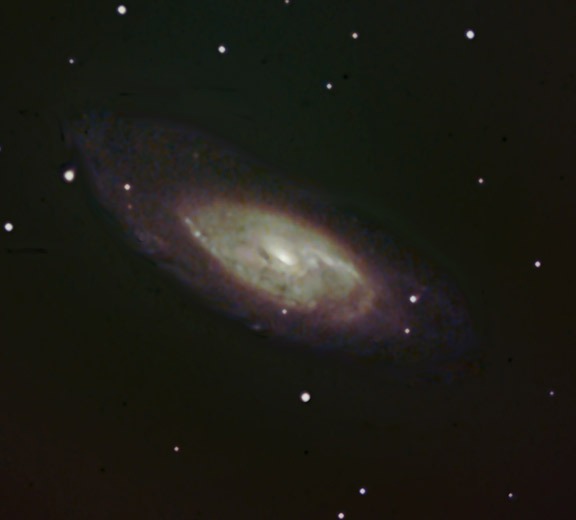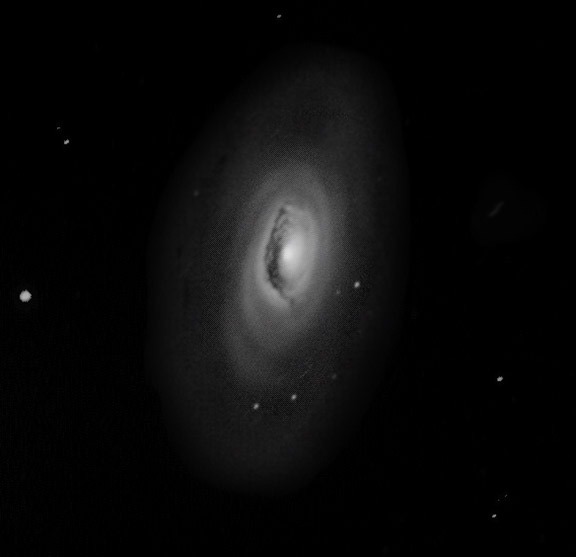Galaxies Continue to Keep me Busy.
Many people wonder how to spend their time during this period of “shelter in place.” I spend a lot of time sheltering in place with my telescope.
This is Messier 106. It was discovered by Pierre Mechain in 1781. Even though records show Mechain was Messier’s assistant, this spiral galaxy was not included in Messier’s original catalog. It was added posthumously in 1947, by the American astronomer Helen Sawyer Hogg.
M106 has a visual magnitude of +8.3. It’s about 20 million light years away from us.

The photo below is of Messier 64, (M64), which is often called the Black Eye Galaxy. It was originally spotted by the English astronomer, Edward Pigott, in 1779. It was “independently rediscovered” later that same year by Johann Bode, and again in 1780 by Charles Messier. M64 is about 17 million light years away from us. It has a visual magnitude of +8.5.

What you can look for in May’s Night Skies
Venus continues to dominate the Western evening skies. If you haven’t seen it, you’re simply not looking. The moon is the only nighttime object brighter then Venus.
If the Western skies are clear on May 1, right after sunset, you might want to check out the line formed by Venus, Betelgeuse, and Sirius. Sirius has a visual magnitude of -1.45 making it the “brightest star” in the night skies. Betelgeuse is the tenth brightest star in our skies with a visual magnitude of +0.6. The alignment is only important if you’re into astrology.
Jupiter rises in the East at about 1:15 a.m., followed by Saturn at 1:30, and Mars at 2:45. There is an invisible fourth member to this group, the dwarf planet, Pluto. It’s in between Jupiter and Saturn.
There are no major meteor showers visible in the Northern Hemisphere during May.
Moon Phases:
1st Quarter is May 29
Full Moon is May 7
Last Quarter is May 14
New Moon is May 22


